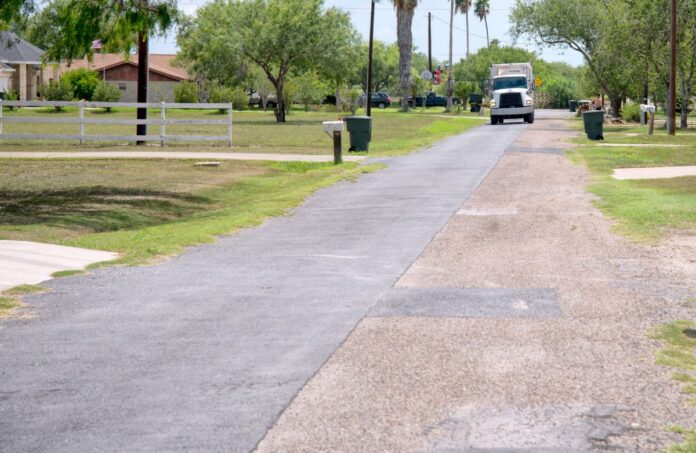HARLINGEN — Across town,
residents want more money pumped into street programs.
For developers, good street conditions can lead to new investment.
At City Hall, officials are counting on a new fee to fund more street projects.
This year, the city is expecting to spend more than $2 million on streets across town.
Out of its proposed $43.5 million general fund budget, $1.9 million is earmarked for street improvements along a cross-section of the city.
This month, city commissioners are expected to consider approving the program’s 14 street projects.
“They’re all over town,” City Manager Dan Serna said. “They’re spread out.”
As part of the program, the city would work on 7.2 miles of streets.
Who pays?
The federal Community Development Block Grant program, which adds an annual average of about $300,000 to the city’s street funding, is expected to help improve streets in low-income areas, Serna said.
This year, the city is charging utility customers a new street maintenance fee expected to fund bigger street programs.
Every year, the city’s staff uses criteria to recommend commissioners approve a list of streets, Assistant City Manager Carlos Sanchez said.
He said the annual street lists are taken from a 15-year master list.
“This plan has been developed over the years where staff identifies roadways that need to be improved,” Sanchez said. “Roads are not arbitrarily selected. They’re selected based on their condition and volume of traffic. We try to spread it out as much as possible.”
How much has been spent?
From 2000 to 2017, the city has dipped into its general fund budget to spend $12.8 million to pave 134.3 miles of streets, city records show.
During the same period, $2.5 million in Community Development Block Grant money was used to pave 24.6 miles of streets.
Since at least 2014, commissioners have approved annual expenditures ranging from about $1 million to $1.5 million based on street lists that have included several roadways along the fast-growing west part of town.
“It’s not all on the west side,” Sanchez said. “It’s been spread out over the years.”
Staff placed those streets on the annual lists because most are rural roads lacking curb and gutter, features that help preserve roadways, Sanchez said.
Only the west side?
“The roadways on the west side are typical county roads — they don’t hold up to traffic so well,” Sanchez said. “The majority are rural roads with no curb and gutter — they’re like roadside ditches.”
“Over time, with wear and tear it’s evident they need work,” he said. “Curb and gutter helps preserve the structure of roadways. Lack of drainage leads to deterioration of roadways without curb and gutter.”
The city’s annual paving program aims to avoid the cost of reconstructing roads, Serna said.
“We try to overlay,” he said. “What we try to avoid is a total reconstruction, which costs more money.”
The city also tries to work in areas that include more than one street identified for improvement, Sanchez said.
“We try to group them so it’s efficient for the contractor,” he said. “It becomes more efficient to keep equipment in one part of town.”
New fee boosts funding
This year, the city’s street improvement program will be funded through a new ordinance setting a so-called street maintenance fee funded through monthly charges appearing on residents’ utility bills.
The fee is expected to generate $460,000 from June, when the ordinance became effective, through Sept. 30, which marks the close of the fiscal year, Serna said.
He said the fee is expected to generate a $1.4 million throughout the coming fiscal year.
In past years, the city has funded its annual street improvements program through its general fund budget, setting aside about $1 million to $1.5 million a year for street projects.
Now, the city’s annual street maintenance fee is expected to generate at least $1.4 million.
“It’s going to provide a consistent funding source,” Serna said. “It’s a dedicated fund that can only be used for street improvements.”
Officials can also add money to boost the fee’s collections.
“The idea with the street maintenance fee is we can do a lot more,” Commissioner Tudor Uhlhorn said. “The amount of money will jump considerably so we can tackle more streets. I think we’re headed in the right direction with that.”
The fee replaces the city’s former so-called infrastructure fee that charged utility customers $1 a month to help fund projects such as public building improvements.





